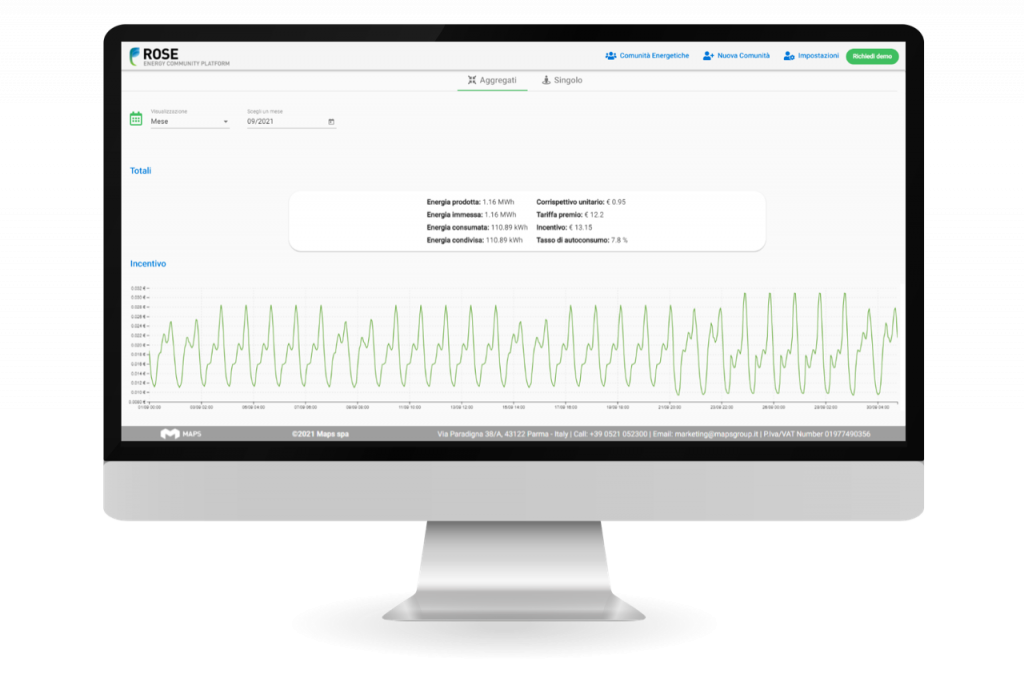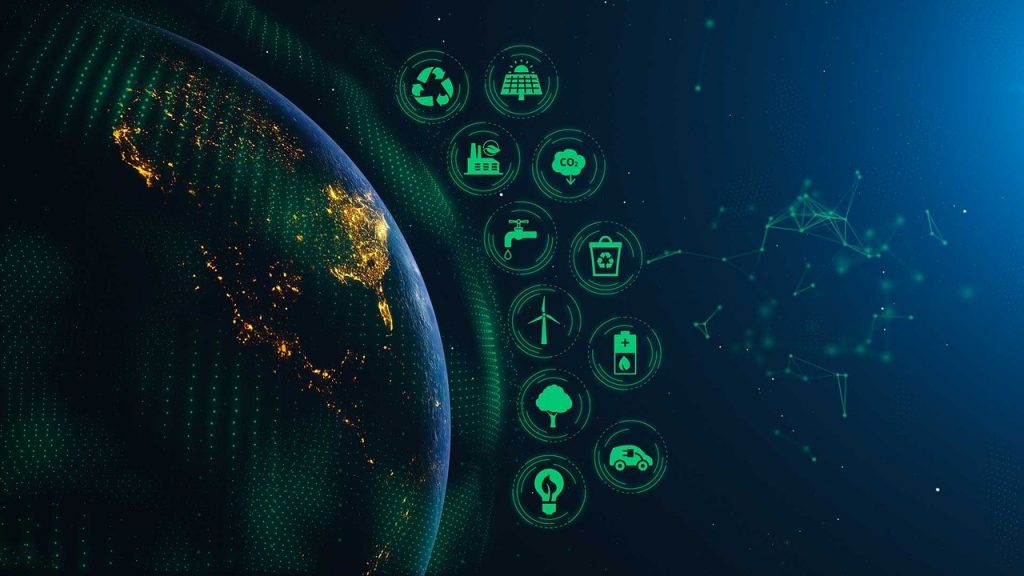The transposition path of the European directives RED II and IEM – the regulations which govern European sustainable development and introduce renewable energy communities (REC), collective self-consumption communities (CSC) and the energy communities of citizens (ECC) – is contributing, also in Italy, to the development of initiatives for the energy transition and the electrification of energy consumption.
In order to achieve the decarbonisation objectives set by the INECP for 2030 and to increase the use of energy from renewable energy sources, to make the system sustainable and ensure its competitiveness, the NRRP allocates a significant share of investments of about 60 billion for sustainable development through Mission 2 – “Green Revolution and Ecological Transition”.
In particular, the large-scale development of energy communities represents one of the cornerstones of the Recovery and Resilience Plan. In fact, component 2 “Renewable Energy, Hydrogen, Network and Sustainable Mobility” plans to invest over 20 billion euro, of which 2.20 for the promotion of energy communities.
The goal is to transform the electricity production, distribution and consumption model and to encourage a change in the role of citizens, who go from being simple consumers to being prosumers, i.e. producers and consumers of energy. It is estimated that the contribution of this new configuration can actively contribute to the reduction of greenhouse gas emissions by an estimated impact of about 1.5 million tons of CO2 per year.
Therefore, to encourage the creation of renewable energy communities and of sustainable business models, it becomes essential to adopt technological solutions that allow carrying out preliminary simulations and verifying in advance the convenience of the projects both in economic and in environmental terms.
To this end, it is useful to have an agile tool available to be used as an energy community simulator.
But how can a simulator be of use? Let’s see it together.
What does an Energy Community Simulator do?
The simulator is a decision support tool for energy efficiency operators and public administrations involved in the development and dissemination of energy communities, which allows entering your project data and evaluating the economic sustainability, the environmental impact and estimating the economic incentives linked to collective self-consumption.
Through an initial configuration of the resources – type and power of the photovoltaic production plant, power of any storage system and the choice of the consumption profiles of the participants – the software develops an energy, economic and environmental analysis, enabling forecasts on the incentive potential of projects.
In other words, the advantage of using a simulator such as the ROSE Energy Community Designer is that of being able to compare multiple configurations, viewing in a single web interface the envisaged balancing data, the usage data of the storage systems and the estimate of the economic incentive disbursed by GSE.

A photovoltaic system simulator and incentives for energy communities: ROSE Energy Community Designer from Maps Spa
Maps Spa, has developed the ROSE Energy Community Platform, a software for the management of renewable energy communities which uses Artificial Intelligence to optimise the management of renewable energy sources and economic performance.
In order to facilitate and favour the preliminary assessments relating to RECs, it provides the ROSE Energy Community Designer, the ROSE module for the feasibility study of energy community projects (REC) or of collective self-consumption communities (CSC), online and in free mode.
The Energy Community Designer allows simulating the consumption of residential users by using the consumption classes provided by an RSE research project (Italian Research on Energy System). These consumption classes consider statistical hourly consumption profiles (Kw/h), the number of people, the electrical household appliances and the season.
The online simulator allows estimating the production of photovoltaic systems using hourly production profiles based on solar radiation data averaged over the last few years, coming from satellite databases, and hypothesising the use of crystalline silicon systems with fixed mounting and fixed tilt and orientation.
The use of statistical data on an hourly basis allows assessing hour by hour the estimated performances of the community, displayed on a monthly or daily basis, thus also enabling evaluations on relevant variables such as seasonal consumption and production.
Similarly, the storage systems are optimised based on their theoretical capacity with the aim of maximising the shared energy of the energy community, hypothesising the use of generic storage without taking into account technical constraints dependent on the technology used.
The simulation of the energy community is based on the current parameters required by law and allows viewing, on an annual, monthly or daily basis:
- The total energy produced, fed in, taken and shared
- The estimate of explicit and implicit incentives
- The percentage of self-consumption
At the same time, the simulator’s dashboard provides several charts to compare the shared energy with the energy fed in and taken, allowing a visual and easy-to-read performance assessment. In addition, there are other charts that allow comparing the energies and the hourly distribution of the incentive. Finally, it is possible to view the individual curves of consumption, production and the optimised storage use profile.
Given the experimental and transitional phase of the renewable energy communities, the Designer is created to adapt to future changes in the regulations and the technical specifications.
In fact, from the administration interface, the user can modify the parameters provided for by the current legislation that determine the calculation of incentives to also simulate and foresee changes in the regulatory scenario.
If you want to start now to estimate the profitability of your projects and to define a sustainable business model for your company, register now and try the basic version of our energy community simulator for free by visiting the dedicated page.

Paolo Gangemi is Product Manager of ROSE Intelligent Energy Management System, the innovative solution for the Energy market in the field of Smart Grids with applications for energy efficiency, flexibility, predictive maintenance and energy communities.
- Paolo Gangemi
- paolo.gangemi@mapsgroup.it
Request more information
